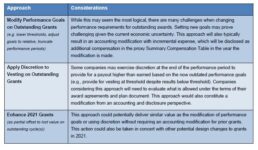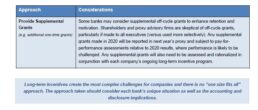 Daniel Rodda
Daniel Rodda
Introduction
The 2020 Coronavirus (COVID-19) pandemic represents one of the most significant global events in recent history, resulting in unprecedented impact on our country’s economy, its businesses and its people. For our financial services clients, initial priorities focused on the safety of employees and customers. At the same time, many banks were thrust into the rapid processing of Paycheck Protection Program (PPP) loans implemented as part of the CARES Act, with some staff working around the clock to ensure small businesses had access to loans to help them through this crisis.
Unlike other industries (e.g. retail, hospitality, airline, travel), the banking industry has, to date, not faced significant layoffs, furloughs or bankruptcies. Partly due to the industry’s stronger capital levels following increased regulation from the 2007/2008 financial crisis, the banking industry has been in a stronger position to withstand the initial months of the pandemic. Nonetheless, the industry has been facing its own set of unique challenges that pre-date the COVID-19 pandemic. For example, banks faced increased pressures on profitability from low interest rates and increased provisions under CECL, the new accounting standard for estimating credit losses. The industry faces longer-term challenges such as a potential increase in loan defaults and reduction of consumer and commercial loans. Expense control is a key initiative, and banks are rethinking “how” they do business both during the pandemic and going forward. Pressures on revenue, expense management and asset quality will be a focus for 2020 and years to come. These challenges continue to put pressure on industry stock prices.
As with any significant economic or business challenge, a careful review of a company’s compensation programs is appropriate. This is, and will be, a historic economic downturn and while there is uncertainty of what “normal” will look like going forward, it seems clear that businesses, workplaces and expectations from executives and employees will undoubtedly change. While this article focuses on executive compensation discussions, decisions and strategies for banks’ broad employee populations (and boards of directors) will also need to be addressed.
Guiding Principles for Change
In evaluating how to respond to the executive compensation challenges resulting from the pandemic, Compensation Committees should consider defining key principles to guide their decisions and any changes going forward. Following are a few considerations:
■ Existing core philosophies and principles still apply, even if the application may change. Executive compensation should still support the business strategy, create alignment between pay and performance, support the retention and motivation of effective executives, and mitigate against excessive risk-taking.
■ While it is important to understand proxy advisory firm (ISS, Glass Lewis)perspectives, their guidelines and perspectives should not restrict or limit the Committee from taking actions appropriate for their organization.
■ Decisions should focus on what is right for the company while considering the optics(both internally and externally) that may result.
■ Decisions should consider perspectives from a broad range of stakeholders including employees, shareholders, consumers, communities and regulators.
■ Executive pay actions should align with the burdens born by other employees across the organization.
■ Non-conventional designs, may be needed to keep management and employees motivated, engaged and aligned with current and rapidly changing business strategies.
■ The Committee will need to use its discretion and business judgment to ensure appropriate outcomes.
■ Companies will need to provide transparency, including robust explanations (and potentially defense) of the rationale for their decisions.
![]()
Pay Considerations
While most initial 2020 pay decisions have been made (e.g. base salary, annual incentive goals and equity grants), Compensation Committees have challenging decisions ahead relating to 2020 incentive payouts and 2021 programs. We suggest companies use the remainder of 2020 to assess the impact of the pandemic on current compensation arrangements and explore potential responses. We would expect most banks to defer final decisions until the end of the year. Given the significant uncertainty, making decisions too early could make it challenging to adjust again at year end. The remainder of this article provides perspectives on base salary adjustments, 2020 annual incentive payouts, outstanding long-term incentive cycles and 2021 compensation program design.
Salary Cuts
Industries with the most adverse impacts from COVID-19 reacted immediately with salary reductions mirroring the severity of the crisis on business results, cash flow and employee job losses/furloughs. As of the time of this article, however, no U.S. bank has announced executive salary cuts, likely reflecting the industry’s stronger capital positioning and limited negative impact on the broader employee population. However, as the crisis continues to evolve, salary reductions may find their way to the banking industry— particularly those banks that begin to reduce employee benefits or have layoffs. Banks considering executive salary reductions should carefully consider both internal and external messaging. Salary reductions can demonstrate solidarity with, and understanding of, challenges faced by employees, but may also be perceived as signs of more significant business challenges by shareholders and customers. The reality is that most salary reductions to date have been minor and/or temporary and therefore have limited impact as a meaningful cost savings to impact business results.
2020 Annual Incentive Programs
While 2020 annual incentive payouts are expected to be significantly reduced from prior years, companies will need a thoughtful process for determining what, if any, payouts are appropriate for executives. Companies in industries with the most severe business impacts during 2020 will likely eliminate executive bonuses. However, our current conversations indicate many banks still anticipate that results might support a modest payout. The specific approach will vary depending on the incentive plan design, but in most cases, Compensation Committees will likely need to exercise discretion when determining if payouts are appropriate.
■ For purely formulaic plans, where goals were set prior to the pandemic, performance may be below threshold on many, if not all, goals. While some companies may consider resetting goals, we caution that the environment remains uncertain. Companies that reset goals may again find themselves with outdated goals before year end. Applying discretion to goals that were already reset may prove challenging. Additionally, where goals are lowered, proxy advisory firms will likely look for similarly reduced target opportunities.
■ Some incentive plans provide for adjusting financial results for extraordinary events, and COVID-19 is certainly extraordinary. However, we expect quantifying the financial impact of COVID-19 with any level of precision will prove challenging. As a result, most Committees will need to use broader judgment in applying any discretion at the end of the year.
■ Incentive plans that already incorporate discretion and/or qualitative goals will have some “built-in” flexibility, although the amount will depend on the specifics of the plans. Plans with “gates” or “triggers” that must be met before any incentives can be paid may find that no payouts are permitted under the plan, even if other goals are achieved. Plans with individual or strategic components might provide payouts to recognize contributions in response to the pandemic (e.g. PPP processing, community support, employee support) even if financial goals are not achieved.
■ The most likely approach will be to use discretion, incorporating a more holistic qualitative approach to evaluating performance at year end. Compensation Committees should evaluate potential payouts based on a number of factors including, but not limited to:

Companies considering discretion should define factors that will be considered at year end and begin tracking and communicating at Compensation Committee meetings during 2020 and leading up to decisions in the first quarter of 2021. If discretionary payouts are made, documenting the rationale and decision process will be critical, particularly for publicly traded companies whose shareholders will closely scrutinize incentive payouts for a year where they may see the value of their shares (and, in a few cases, dividends) decline significantly.
Outstanding Long-Term Incentive Awards
As the COVID-19 crisis unfolded, executives across all industries saw the value of their outstanding long- term incentive awards reduced significantly as a result of declines in stock prices. While some industries have seen stock values rebound to pre-crisis levels, as of this writing most financial industry stocks continue to lag pre-crisis levels. Additionally, many performance-based awards are tracking at lower (if any) payouts, particularly those with absolute performance goals that were based on economic assumptions that are no longer aligned with the current reality.
While many banks use similar long-term incentive components, there are variations in practice that can create different challenges in the current environment. The following are several factors that will impact the state of outstanding awards:
■ Mix of vehicles: Banks that granted a higher percentage of time-based restricted stock are generally less adversely impacted than those with a higher weighting on performance-based awards. For the minority of banks that grant stock options, some are now underwater, although the typical 10-year term may provide several years for prices to rebound. Although a less prevalent practice, companies with long-term cash incentives have some protection from the impact on stock value.
■ Type of performance goals: Many banks use relative performance measures for long-term incentive plans, which can be effective at evaluating performance even in a volatile market. Among banks with absolute performance measures, those that established higher threshold requirements will face more challenges than those with a wider performance range allowing for some payout at lower performance levels.
■ Structure of performance measurement: While most banks use a 3-year performance period for their long-term incentive awards, there can be differences in how performance is measured. Typical market practice is using a 3-year average but some banks count each performance year separately.
There are several factors and potential approaches to consider when evaluating whether, and how to, account for declines in outstanding long-term incentives.
The underlying assumption with any incentive program is that payouts should vary over time to reflect performance. As such, reduced value of long-term incentive grants is to be expected in times of economic stress, where absolute performance and stock prices decline significantly. However, companies may be concerned about the lost retention and incentive values driven by unprecedented events outside anyone’s control. Some banks, particularly those with a high weighting on performance-based awards, absolute performance goals and/or where threshold performance criteria are unlikely to be met, may consider actions to address some of the impact on outstanding long-term awards.
For publicly traded companies, shareholder perspectives will be important since they have lost significant value in their investments and may be critical of some of the adjustments discussed below. The major proxy advisory firms (Institutional Shareholder Services and Glass Lewis) have already indicated that they will look at any adjustments to long-term incentive awards skeptically. Shareholders will expect a clear and defensible rationale for any adjustments or “make-up” grants made. As with any discretionary adjustments to annual incentives, we expect shareholders will evaluate decisions in light of each company’s financial and stock price performance as well as the impact of the pandemic on employees, customers and communities.
For bank Compensation Committees that determine an adjustment for outstanding awards is appropriate, potential approaches are outlined below:


2021 Incentive Plan Design Considerations
Given the significance of the pandemic and potential long-term effects, we believe it is prudent for financial institutions to take a “fresh look” at the design of their incentive plans based on the changing economic environment, shifts in strategy resulting from the pandemic, and new compensation challenges. Changes that could be considered going forward include:
■ Building in more discretion to annual incentive plans;
■ Changing performance metrics and weightings to reflect new priorities;
■ Incorporating qualitative metrics, including strategic imperatives and ESG priorities (e.g., employee and community impact, diversity & inclusion, sustainability);
■ Incorporating relative performance goals, particularly in long-term incentive plans;
■ Lowering incentive plan gates and/or threshold performance criteria (potentially with lower threshold payouts) to reduce the probability of zero payouts; and
■ Increasing the weighting of time-based restricted stock in long-term incentive plans.
In Summary
While banks have not been hit as hard from COVID-19 as some other industries, the pandemic has still created significant challenges that stress compensation programs. Compensation Committees must carefully evaluate their responses to these challenges, balancing the need to retain and motivate executives with not appearing tone deaf to the impacts of the pandemic on shareholders, the broader employee population and the communities in which the bank serves. Committees will need to use carefully considered judgment and be prepared to explain the rationale for their decisions. While in most cases it will be advisable to delay final decisions until they need to be made in early 2021, Compensation Committees should use the rest of 2020 to narrow their potential choices and discuss the criteria theyanticipate using to guide their decisions.

